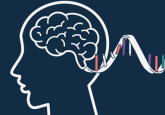Tau shalt not return to play

A potential biomarker may help football players avoid post-concussion brain damage.

This January, former New York Jets defensive end Mark Gastineau told a radio show host that he had been diagnosed with dementia, Alzheimer’s Disease, and Parkinson’s Disease. The Jets all-time leader in sacks said he believes his ailments were caused by playing football. The revelations came just a few weeks before the Super Bowl, the most widely viewed event in sports.
Gastineau is the latest in a growing list of professional athletes, active and retired, who have come forward about concussion-related health issues, including chronic traumatic encephalopathy, which is known to contribute to cognitive impairment, depression, and even suicide. Due to their frequent occurrence during play, concussions has gained nearly as much exposure in recent years as the game of football itself.
It’s no wonder then that concussion is now the subject of much research, including a recent study conducted by scientists at the National Institutes of Health that identified a biomarker that may help neuropsychologists determine the severity of a concussion and how soon a player can get back in the game.
Jessica Gill and her team of researchers at the NIH decided to look at tau, a protein notorious for its role in Alzheimer’s disease. It is secreted after brain trauma, so Gill thought tau might serve as a corollary of concussion severity.
Prior research using subjects who played ice hockey determined that elevated levels of tau in plasma were associated with the duration of time before an athlete was cleared to return to play (RTP). That protocol includes cognitive tests, postural stability, and symptom reporting to a consulting physician.
According to Gill, employing a biomarker test might ameliorate some of the ambiguous aspects of relying on self-reported symptoms from players. “In fact, part of the reason we did this study is that RTP is dependent on symptom recording,” said Gill. “But, athletes are biased. Trainers, coaches, and parents, as well as military—everyone wants to get back in the game.”
Gill planned to test tau as a biomarker using a younger cohort that represented female and male athletes. Her team hypothesized that acute increases in plasma levels of tau would correlate with a longer time for athletes to return to play.
“Tau gives us another level to understand what’s going on,” she said.
Gill tested 632 male and female NCAA athletes at the start of their athletic seasons to collect baseline data. She used two control groups, consisting of concussed non-athletes and non-concussed athletes, to compare to 46 subjects who experienced a sports-related concussion during the study period.
The results confirmed those of previous studies and offered some new insights. Plasma tau increased when tested 6 hours after a concussion, which ultimately correlated with a longer RTP. But Gill was surprised by the results from one of the control groups: all athletes, regardless of concussion, had elevated tau.
“Previous comparisons were with healthy controls, not athletes without concussion,” said Gill. “We added that control.”
The finding that tau doesn’t arise solely from brain trauma suggested a more complex role than the researchers had thought. However, its marked elevation in concussed athletes and its demonstrated relationship to RTP suggested that tau may be a legitimate biomarker with applications on the sidelines of multiple sports, including professional football.
“The biomarkers are kind of the holy grail everybody is looking for as predictive of the seriousness of a concussion and the duration of return to play,” said Kenneth Perrine, consulting neuropsychologist for the New York Jets. Perrine approves professional athletes for return to play once he’s evaluated them after concussion, but he has doubts about relying on biomarker research.
“The problem with a lot of these studies is that they ignore the actual symptomatology and what the player is actually experiencing,” said Perrine. “Just because a player returns to play does not mean they have completely cleared their symptoms.”
While the NFL is an early technology adopter both on and off the field (think instant replay and locker room X-rays), the latest advances in blood testing aren’t necessarily the answer for prognosticating about concussed football players.
“What I like to do is look the player in the eyes, and as a psychologist, being able to look at them and say all right, how are you really feeling?” Perrine said. “Being able to integrate the totality of the particular player is critical.”
”Some of the players at the pro level go out partying the night before I do my testing. The trainer will tell me he’s been out until early morning. He’s here now at eight in the morning. That can be a problem. So the individual’s background and the totality of what’s going on in their lives factors into it,” he added.
According to Perrine, collegiate athletes will intentionally cover up their symptoms more than professionals. They have more of an incentive to keep playing, especially if they’ve been pursuing football since an early age. In that case, a biomarker such as tau may come in useful as one of the tools a physician can use to clear a player to get back on the field.
“We want to be able to get something that can be generalized to different cohorts,” said Gill, who thinks this study is an early step towards a test that can be used across the younger age groups, including for high school and middle school athletes.
Even beyond that, however, is the potential for research into tau to shed light on other brain ailments outside of sports, including in the military where soldiers suffering from brain trauma may return to service or civilian life with long-term dysfunction, said Gill.
“This is where the science is really beginning,” she said. “Now we know we can use [tau] and peripheral blood to understand brain-related injuries. We’re only just now starting to understand.”





